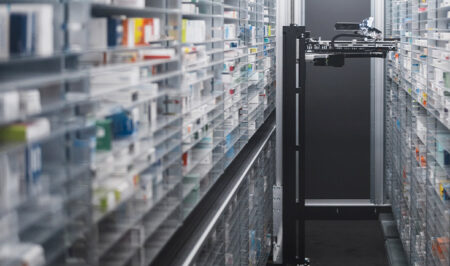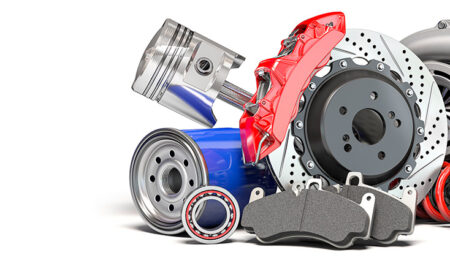How Just-In-Time Delivery Transforms Automotive Supply Chains
The automotive industry has witnessed a remarkable transformation in its supply chain management over the decades. Traditional automotive supply chains followed linear models, characterized by bulk ordering, excessive inventory, and limited flexibility. These conventional systems often struggled with:
- High storage costs
- Slow response to market changes
- Wasted materials if demand dropped
As global competition intensified, manufacturers began seeking more efficient approaches to remain competitive. Toyota then introduced Just-In-Time (JIT) delivery in the 1970s, aligning part deliveries with the exact moment they were needed for assembly. This reduced waste, sped up production, and saved money. Over time, JIT became a global standard in the auto industry.
Just-In-Time (JIT) Delivery Explained
Just-In-Time delivery is a lean logistics strategy that aligns raw material orders directly with production schedules, so components arrive precisely when needed for assembly. This approach replaces traditional “push” manufacturing (based on forecasts) with “pull” systems driven by actual demand. Instead of stocking up on parts, manufacturers receive them just when they’re needed. This “pull” system is based on actual demand, not forecasts.
Why JIT Works So Well

Just-In-Time (JIT) manufacturing has revolutionized how modern factories operate. Its efficiency-driven approach offers several key benefits that boost productivity and cut costs. Here are some of the main reasons why JIT works so effectively:
- Lower inventory costs – Less money tied up in stock
- Faster production – Parts arrive on time, no delays from sorting old inventory
- Better quality – Problems are spotted quickly before they affect many cars
- Flexible manufacturing – Easy to switch car models on the production line
Tools That Make JIT Possible:
Several advanced tools help make Just-In-Time manufacturing possible by ensuring the right parts arrive at the right time. The table below highlights some of the most important tools and how they support JIT systems.
| Tool | What It Is | What It Does | Example |
| Kanban System | A visual workflow management method originally from Japan | Signals when more parts are needed | Cards or digital screens showing low inventory |
| IoT Sensors | Internet of Things: Internet-connected devices that collect and share real-time data | Track parts in real-time | Notify supplier when stock runs low |
| ERP Systems | Enterprise Resource Planning: Software platforms that integrate and manage core business processes | Manage the entire supply chain digitally | Auto-ordering from approved vendors |
| Predictive Analytics | Data analysis tools using AI and historical data to forecast future trends | Forecast demand and avoid delays | AI models based on past trends |
JIT in Action: Mexico’s Role in Automotive Supply Chains

Just-In-Time (JIT) manufacturing is a key driver of the strong trade relationship between Mexico and the United States. With factories and suppliers located just across the border, companies can quickly transport parts and materials, reducing delays and keeping inventory levels low. This cross-border setup allows manufacturers, especially in the automotive industry, to respond rapidly to changes in demand while maintaining high efficiency. The success of JIT in this region depends on reliable supply chains, real-time tracking tools, and smart planning systems, as outlined in the table below.
Why Mexico Is a Big Deal
Mexico has emerged as a hub in global automotive manufacturing, with its automotive sector growing exponentially over the past two decades. As the second-largest supplier of high-tech goods to the U.S., Mexico exported approximately $102.5 billion in advanced technology products in 2024, marking a 35.2% increase from the previous year. This remarkable growth has positioned Mexico as an critical link in North American automotive supply chains, particularly following the implement important link of the U.S.-Mexico-Canada Agreement (USMCA), which has strengthened trade relationships and facilitated cross-border manufacturing integration.
The strategic advantage of Mexico’s proximity to the U.S. market amplifies these benefits supporting quick, low-cost shipping, enabling “just-in-sequence” delivery where components arrive not only at the right time but in the precise sequence needed for assembly. This sophisticated approach requires “bonded services” that facilitate duty-deferred parts storage and transportation, further reducing operational costs and lead times.
How Mexico Uses JIT
Mexican automakers, especially those near the U.S.-Mexico border, rely heavily on JIT to keep production lean and fast. Companies operating in the San Diego-Tijuana corridor offer comprehensive solutions including:
- Door-to-door delivery
- Flow analysis & optimization
- Intermodal (truck + rail) transport
- Secure systems with:
- 21-point inspections
- K-9 units
- 24/7 GPS tracking [Source: MC Border Crossing Services]
JIT Benefits for Mexican Auto Industry:

The implementation of JIT delivery has delivered substantial benefits to Mexico’s automotive sector.
- Lower warehouse space requirements
- Lower storage costs
- Greater manufacturing flexibility
- Decreased capital tied up in components
- Faster model changeovers
- Global competitiveness: attracting more investment
Bonus Advantage:
Just-in-Sequence Delivery: Not just on time, but in the exact order needed on the production line.
| JIT Benefit | Impact |
|---|---|
| Reduced storage | Cuts overhead by 15–30% |
| Flexibility | Quicker response to new car models |
| Investment appeal | More foreign companies set up plants |
Logistics Precision is Key
JIT success depends on timely delivery, often down to the minute. To make this work, automakers rely on:
-
- Sophisticated transport networks
- Real-time tracking
- Security and customs coordination for cross-border shipments
Challenges for JIT Automotive Supply Chains

While the Just-In-Time (JIT) model improves efficiency, recent global events have exposed its major vulnerabilities:
- Pandemic disruptions: COVID-19 led automakers to cut semiconductor orders; when demand returned, supply couldn’t keep up, stalling production for years.
- Geopolitical risks: Tensions and global instability further strained tightly coordinated supply chains.
- Tariff increases: Inventory planning and sources strategies are more complicated due to tariff increase, forcing tech upgrades for efficiency.
- Single-source dependencies: Toyota’s 1997 Aisin fire showed how relying on one supplier can halt entire operations, costing billions.
- JIT paradox: The model’s strength—lean, efficient inventory—also makes it fragile in the face of unexpected disruptions.
Making It Resilient for the Future
Despite challenges to the JIT system, manufacturers are implementing multifaceted strategies to enhance supply chain resilience while preserving JIT efficiencies.
New Strategies:
- “JIT + Buffer” – Keep a small stock of critical parts
- Supplier diversification – Don’t rely on just one region
- Nearshoring – Move suppliers closer to the factory
- AI-driven risk analysis – Spot weak links before they snap
Border-Specific Enhancements:
- Extra security (K-9 units, inspections)
- Smart customs integration
- Digital tracking tools at every checkpoint [Source: MC Secure Logistics]
Smarter, Leaner, Stronger Supply Chains
Streamline your supply chain with Mex-Cal Truckline. With over 40 years of cross-border logistics experience, we specialize in:
- Real-time GPS-tracked deliveries
- Secure border clearance
- Custom logistics solutions
Make your supply chain faster and smarter to save money. Contact Mex-Cal Truckline.





